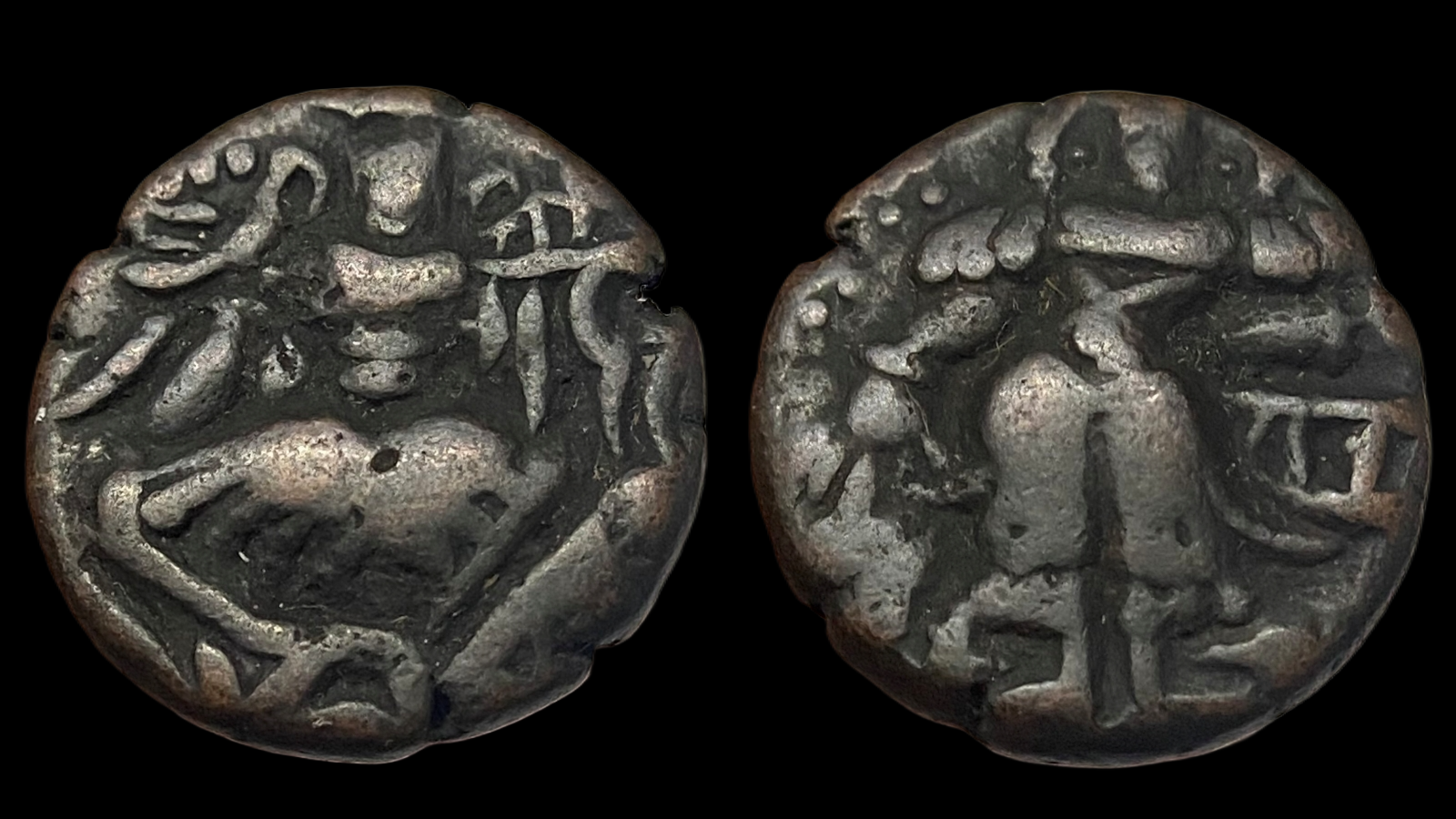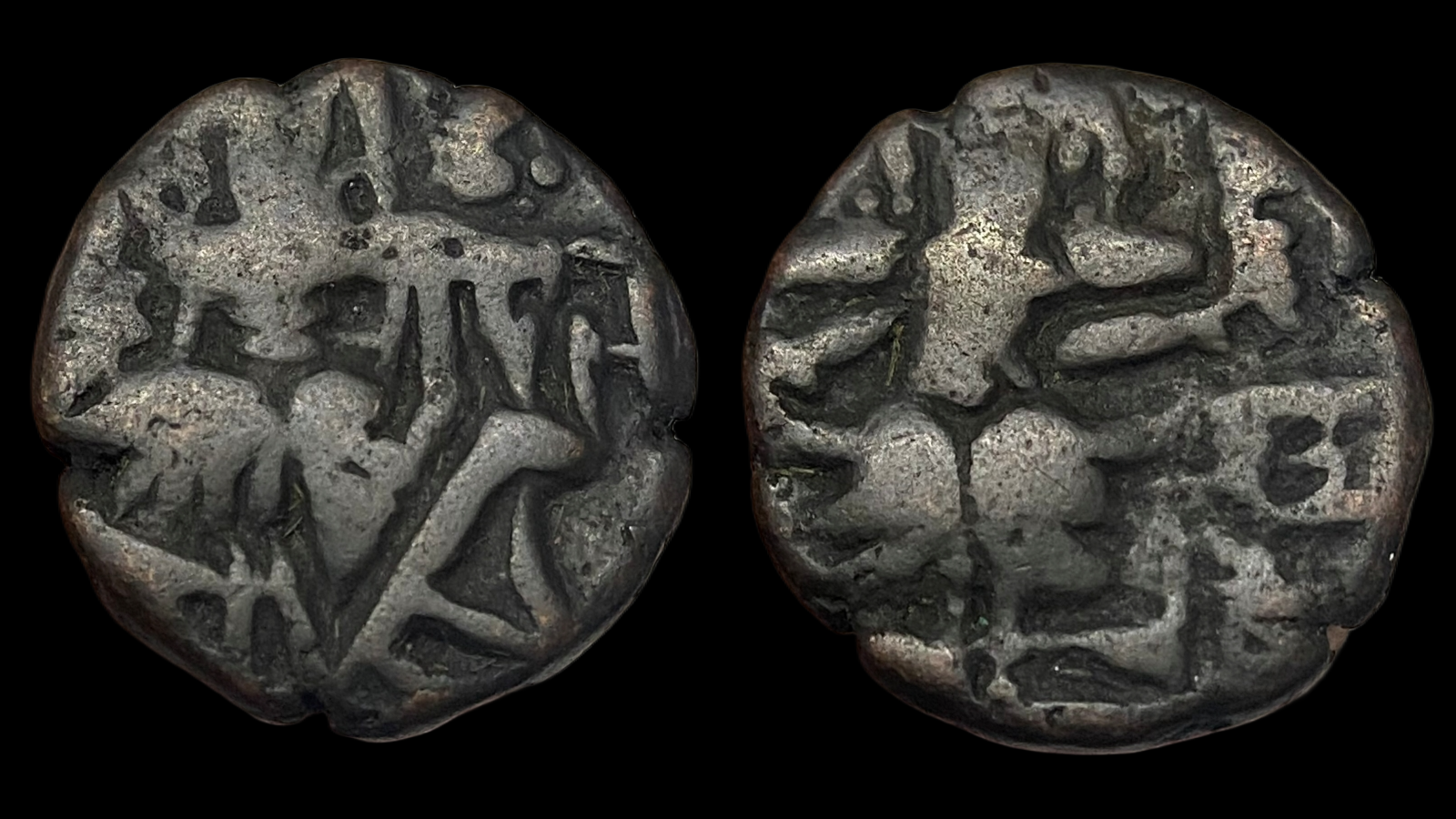Ancient Indians were the earliest issuers of coins in the world, along with the Chinese and Lydians (from the Middle East). The first Indian coins – punch marked coins called Puranas, Karshapanas or Pana – were minted in the 6th century BC by the Mahajanapadas (republic kingdoms) of ancient India. These included Gandhara, Kuntala, Kuru, Panchala, Shakya, Surasena, and Saurashtra.
Then came the Mauryas who punch marked their coins with a royal standard. Chanakya, prime minister to the first Mauryan emperor Chandragupta Maurya, mentions the minting of coins such as rupyarupa (silver), suvarnarupa (gold), tamararupa (copper) and sisarupa (lead) in his Arthashastra treatise. The Indo-Greek Kushan kings who came next introduced the Greek custom of engraving portrait heads on coins.
Their example was followed for eight centuries. The extensive coinage of the Kushan empire also influenced a large number of tribes, dynasties, and kingdoms, which began issuing their own coins.
The Gupta Empire produced large numbers of gold coins depicting the Gupta kings performing various rituals. This tradition of intricately engraved coins continued till the arrival of the Turkish Sultanate in North India.
Categories
- Accessories (0)
- Monthly Sales (1)
- Medals (0)
- Currency Notes (7)
- Numismatic Books (0)
- Ancient India (251)
- Ancient World (14)
- Central India (1)
- Ayodhya Region (37)
- Panchala (11)
- Hiranyaka Dynasty (31)
- Mauryan And Sunga Cast Copper Coins (21)
- Kausambi (32)
- Indo Greeks (2)
- Ancient Kingdoms and City States (43)
- Indo Scythians (0)
- Punch Mark Coins Of Janpad (13)
- Western Kshatrapas (13)
- Kushans (23)
- Guptas (0)
- Satwahana (200 BC-300 AD) (0)
- Huns (0)
- Post-Guptas (0)
- South-Indian Dynasties (0)
- Others (2)
- Hindu Coins of Medieval India (427)
- Sultanates (281)
- Mughal Empire (56)
- Independent Kingdoms (IK) (108)
- Indian Princely States (IPS) (42)
- Colonial Powers (0)
- East India Company & British India (3)
- Uncategorized (0)






